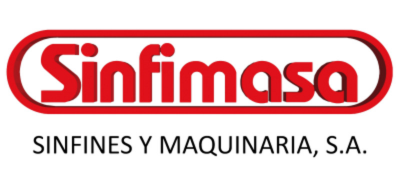Experience and Commitment
The main business of Sinfines y Maquinaria S.A. (Sinfimasa) is to understand the customer and design and manufacture conveyors according to project requirements and the specifications of the solid material to be handled.
At our facilities in Guissona (Spain), we have our own engineering department with over 35 years’ experience, where we design machines that meet our customers’ technical specifications and make our commitment to their engineering project. We offer solutions for conveying and lifting bulk solids with uncompromising quality and precision, and we ensure equipment reliability in every situation in the processing plant.
Safe, Robust, Reliable
In our production plant we manufacture products with all types of finishes as required: pickled and passivated, electro-polished, lacquered, sandblasted and food-grade, etc. We work with different materials such as carbon steel, stainless steel and anti-wear steel. We use high quality and universally available components such as SEW gearmotors or SKF bearings. Our suppliers are also key to our success and we make a commitment to them.
We have a test bench where, based on product samples from our customers, we research the best solution for the requirements of each project. We are committed to our customers and engineering companies to offer machines with guaranteed reliability.
Sinfimasa has welding procedures and welders approved according to ASME Section IX (QW-484).
We use an automated welding system to ensure that the entire length of the conveyors are welded evenly and are free from voids.
At Sinfimasa we are rigorous and demanding, with numerous references in several countries on all five continents as our guarantee. Please ask us for more information as you require.
Consult us about your project on no obligation. We will make you a reliable technical proposal that is 100% adapted to your requirements.






